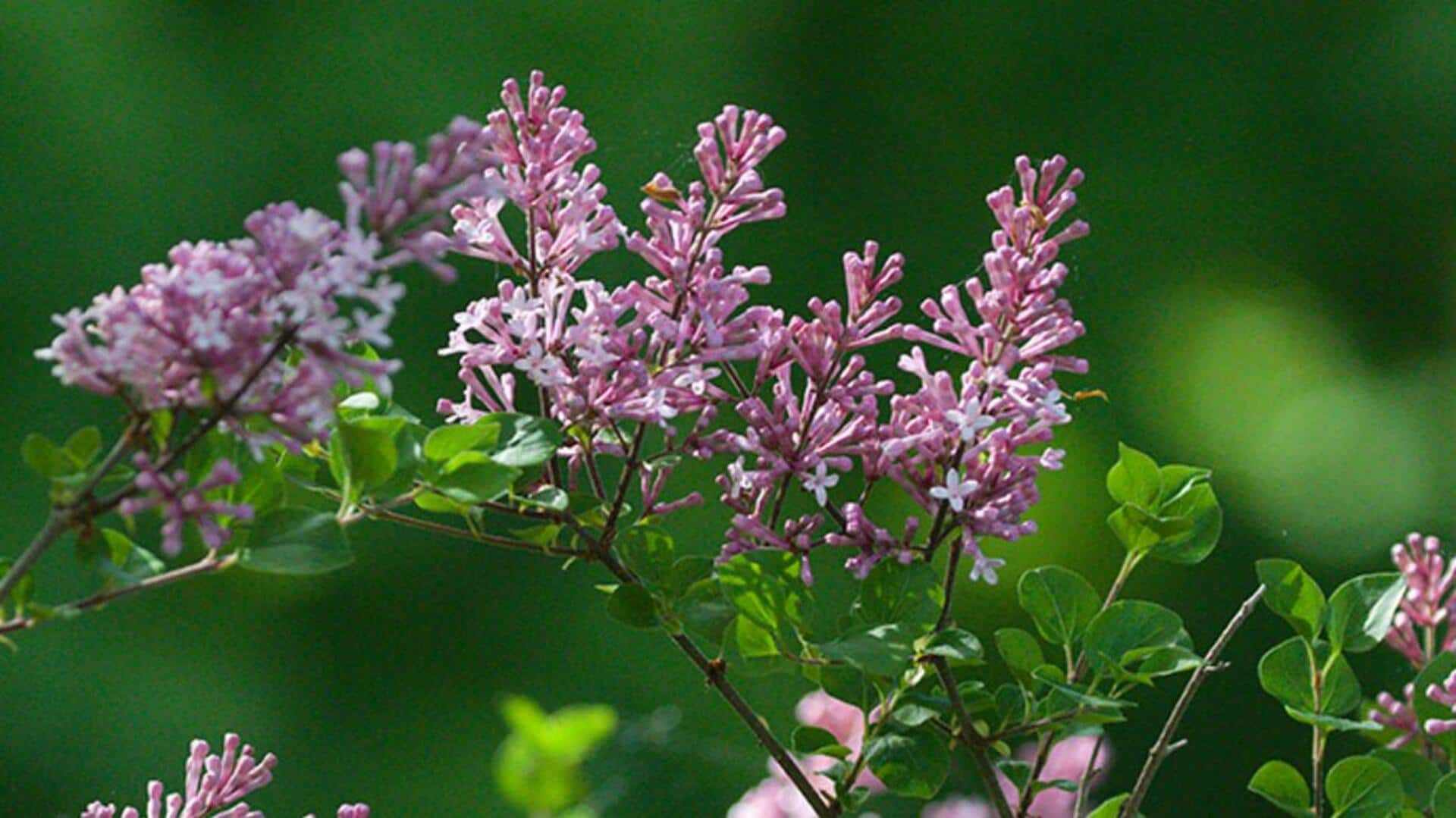
How to grow healthy lilac shrubs
What's the story
Lilacs are a favorite among urban gardeners for their vibrant blooms and intoxicating scent.
Cultivating them in the confines of tiny urban courtyards can be a fulfilling challenge. You just need to know the right way to do it.
This article shares expert tips on how to make lilacs flourish, ensuring they become the radiant showpiece of your urban oasis.
Variety selection
Choosing the right variety
Not all lilacs are ideal for small spaces.
Dwarf varieties such as the Syringa meyeri 'Palibin' or Syringa pubescens subsp. patula 'Miss Kim' are excellent choices for courtyards.
They reach a maximum height and width of five feet.
These smaller plants provide the same fragrant blooms without overpowering the space.
Site preparation
Preparing the planting site
Lilacs need well-drained soil and lots of sun to thrive.
Select a location in your yard that gets a minimum of six hours of direct sunlight each day.
Enhance soil drainage by incorporating organic matter like compost or well-rotted manure before planting.
Lilacs prefer a pH level between six and seven. You might want to test your soil's pH and amend it if needed.
Planting & watering
Planting and watering techniques
When planting lilacs, the hole should be twice as wide as the root ball and only as deep as the plant was growing in its nursery container.
This promotes healthy root development.
After planting, water thoroughly to settle the soil around the roots.
Lilacs prefer evenly moist soil, so water them regularly during dry spells, particularly in their first few years after planting.
Pruning practices
Pruning for health and bloom maximization
Pruning is important not only for shaping your lilac but also for promoting blooming and ensuring plant health.
The ideal time to prune is immediately after the flowers have wilted in late spring or early summer.
First, remove any dead or diseased branches, then thin out crowded areas to improve air circulation within the plant.
Fertilization tips
Fertilizing your lilac bushes
Lilacs don't need heavy fertilization, but a yearly application of a balanced fertilizer ($10-$20 per bag) can encourage healthy growth and flowering.
Fertilize in early spring before new growth starts, but make sure to follow the package instructions.
You don't want to over-fertilize, that can damage your plants instead of helping them.